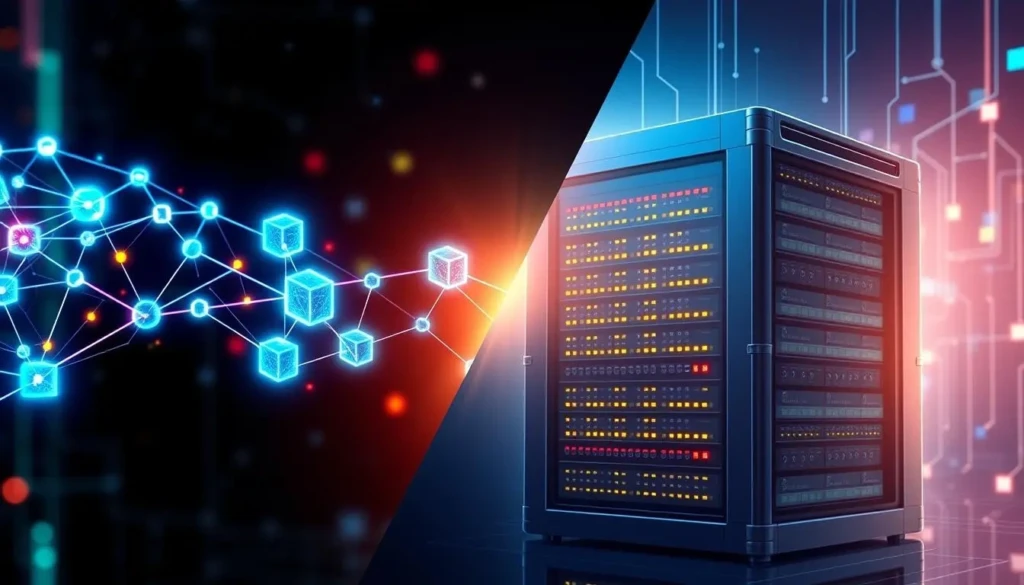What is Blockchain?
What is Blockchain? It’s more than a buzzword. It’s a technology quietly transforming how we share information, exchange value, and build trust in a digital world. At its core, blockchain is a decentralized ledger — a record-keeping system maintained not by one authority, but by a network of computers.
This design makes blockchain transparent, secure, and resistant to manipulation. Since Bitcoin introduced it to the world in 2009, blockchain has evolved into a foundational technology shaping finance, healthcare, supply chain, and even governance.
The Origins of Blockchain Technology
While blockchain rose to prominence with Bitcoin, the idea predates cryptocurrency. In 1991, researchers Stuart Haber and W. Scott Stornetta proposed using cryptographic timestamps to secure digital records. Their work planted the seeds for a decentralized ledger.
It wasn’t until 2009 that the pseudonymous Satoshi Nakamoto turned this theory into practice. By introducing Bitcoin’s proof-of-work system, Nakamoto proved it was possible to reach consensus without a central authority. This innovation marked the birth of blockchain as we know it.
How Blockchain Works
Blocks, Chains, and Nodes
Blockchain operates like a distributed digital notebook. Each entry — or transaction — is grouped into a block. Once validated, that block is cryptographically linked to the previous one, creating an immutable chain of records.
The network is powered by nodes, computers that validate and share transactions. Together, they maintain the ledger without relying on banks, governments, or intermediaries.
Consensus Mechanisms
The system’s reliability depends on consensus. In proof-of-work systems like Bitcoin, miners solve complex puzzles to add new blocks. In proof-of-stake systems such as Ethereum, validators are chosen based on the amount of cryptocurrency they stake. Both approaches ensure the ledger remains accurate and secure.
Security at the Core
Blockchain’s strength lies in its security features:
- Cryptographic Hashes: Each block contains a unique digital fingerprint tied to the previous block, making tampering nearly impossible.
- Digital Signatures: Transactions are authenticated using private and public keys, ensuring they come from legitimate participants.
- Decentralization: Because no single entity controls the ledger, altering records would require controlling more than half of the network’s computing power — a nearly unachievable task for large blockchains.
According to the World Economic Forum, blockchain’s combination of cryptography and decentralization offers unprecedented security in digital systems.
Smart Contracts: The Next Frontier
Beyond transactions, blockchain enables smart contracts — self-executing agreements written in code. These digital contracts automatically enforce rules when conditions are met, removing the need for intermediaries.
Examples include:
- Finance: Automated settlements in decentralized finance (DeFi) platforms.
- Supply Chains: IBM’s blockchain solutions for pharmaceutical traceability.
- Real Estate: Faster property transfers without brokers.
As reported by IBM Blockchain, these applications increase efficiency, cut costs, and reduce human error.
Blockchain vs. Traditional Databases
Unlike centralized databases controlled by corporations or governments, blockchain distributes records across a network. This difference creates key contrasts:
| Feature | Blockchain | Traditional Databases |
|---|---|---|
| Data Structure | Decentralized ledger | Centralized tables |
| Integrity | Immutable | Vulnerable to edits |
| Transparency | Publicly auditable | Restricted access |
| Energy Use | High (in PoW) | Low |
While traditional databases excel at speed and scalability, blockchain shines where trust, transparency, and resilience are critical.
Real-World Applications
Blockchain has moved far beyond cryptocurrency:
- Finance: Ripple and Stellar are streamlining cross-border payments.
- Supply Chains: Walmart uses blockchain to trace food safety from farm to store.
- Healthcare: Companies like MediLedger secure pharmaceutical supply chains and medical records.
- Governments: Estonia has pioneered blockchain-based public services, from voting to land registries.
These examples show blockchain’s potential to reshape industries by enhancing accountability and reducing fraud.
The Future of Blockchain
The blockchain market is projected to reach $94 billion by 2027, growing at a staggering 66% annual rate. Yet challenges remain. Scalability issues, energy-intensive consensus methods, and fragmented regulation could slow adoption.
Innovations like layer-2 protocols, cross-chain interoperability, and green consensus mechanisms are emerging as solutions. Moreover, integration with AI, the Internet of Things (IoT), and the development of central bank digital currencies (CBDCs) will likely accelerate mainstream use.
As industries increasingly adopt blockchain, its role will expand from niche infrastructure to a backbone of the digital economy.
Conclusion: A Decentralized Future
Blockchain is no longer just the engine behind Bitcoin. It’s a paradigm shift in how we handle data, trust, and transactions. Its decentralized design ensures transparency and security, challenging the dominance of centralized institutions.
As adoption spreads across finance, healthcare, logistics, and governance, blockchain is becoming the foundation for a more secure and efficient digital world. But its future will depend on solving pressing challenges — from scalability to regulation.
For businesses and individuals, understanding what is blockchain today means preparing for a tomorrow where decentralized systems reshape global trust.
FAQ: What is Blockchain?
What is Blockchain in simple terms?
Blockchain is a decentralized digital ledger that records transactions across multiple computers. It’s transparent, secure, and nearly impossible to tamper with.
What is Blockchain used for beyond cryptocurrency?
Blockchain is applied in finance, healthcare, supply chains, and even voting systems. It improves transparency, reduces fraud, and builds trust in digital transactions.
What is Blockchain’s biggest advantage?
Its immutability and decentralization. Once data is added, it cannot be altered without detection, reducing the risk of fraud or manipulation.
What is Blockchain’s future potential?
Blockchain is expected to expand into industries like real estate, logistics, and public governance. With CBDCs and DeFi growth, its role will only increase.

